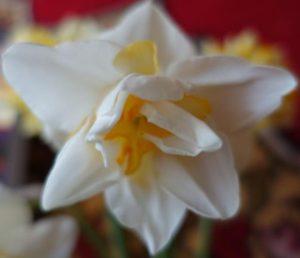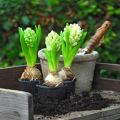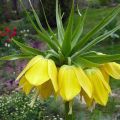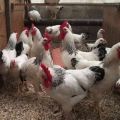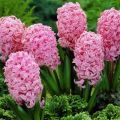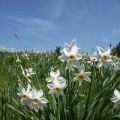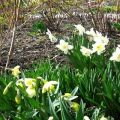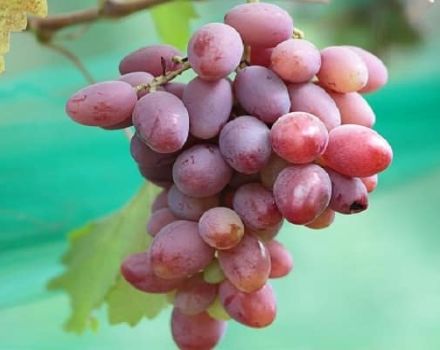Description of the Dutch Master daffodil variety, planting and care rules
The Dutch Master daffodil is one of the most popular varieties in the CIS countries. The flower is distinguished by its large size, rich, yellow color. It is not difficult to grow it even for an inexperienced gardener. You should first familiarize yourself with all the features of agricultural technology.
Description and features of the variety
The dutch master variety was created in 1948, the name translates as "Dutch master". This is one of the largest yellow daffodils. It will grow from 45 to 60 cm upward, its crown is equal to or 1/3 longer than the lobes of the petals. The tube is wide, with a wavy edge, rich yellow. Flowers are localized horizontally, they have 1 peduncle.
The size of the bud is up to 12 cm in diameter. It is suitable for gardens, planting under trees and for growing in containers. Tubular daffodil looks great in tandem with other spring-blooming plants such as tulips, violets, and muscari. The variety has a long flowering period, up to 3 weeks, and has a faint odor. Grows well in the shade or penumbra, pollen falls in mid-April.
Growing
The culture should be planted in a lighted place or light partial shade. When planting in containers, ensure good drainage. Containers should be with holes, a drainage layer is made at the bottom. The containers are filled with a garden substrate, the bulbs are placed on top at a distance of 3-7 cm from each other. They are covered with soil so that only their tops are visible.
Landing dates
It is recommended to plant Dutch Master daffodils from August 15 to early October. It is important that there is no frost, the air temperature is kept within 10-15 degrees. When it comes to planting flowers in greenhouses, you can do this at any time of the year.

Soil preparation
The first plowing is carried out at a depth of 30-35 cm in June. Until the moment of planting, it is advisable to store the bulbs in a cool room with good ventilation at a temperature of 20 degrees. Before planting, the soil is loosened on a shovel bayonet, minerals and organic matter are added to it.
Landing scheme
The depth of the pits should be 2 times the height of the bulb. Maintain a distance between landings from 5 to 15 cm.

Care rules
Daffodils are relatively undemanding plants that take root well in new places. After pollen, peduncles are removed, and the leaves are left. In dry weather, you need to water the plants. Transplant to a new location every 5 years. The bulbs are pre-dug in August, sorted, dried in the shade.Flowers do not tolerate excess moisture, drying out of the soil. Potted plants require regular feeding.
Loosening and weeding
The plantings should be weeded out, or the weeds will clog the daffodils, inhibiting their growth. Weeds should be picked by hand so as not to damage the flower bulbs and not cut off its leaves. The soil is loosened superficially, the manipulation stimulates aeration of the rhizome.
Watering, fertilizing
When there is a lot of rainfall during the growing season, additional watering is not needed for daffodils. From excess moisture, the bulbs rot. If the weather is dry, hot, it is necessary to irrigate the plants. They especially need moisture after pollen until the end of June, until the leaves begin to turn yellow.

Daffodils should be fed to stimulate their growth, increase protective functions.
- A year before planting, the soil is treated with lime. Ash is taken 200 g per 1 square meter. It is brought in every year.
- Sod, manure, peat, coarse river sand are combined in equal proportions. The combination is poured into the soil before planting.
- Daffodils do not like manure, if it is used, take 3-4 years old and rotted.
- When the soil contains a lot of clay, increase the dose of turf.
- Heavy soil is fertilized with river sand and humus in increased quantities.
In terms of mineral formulations, you should choose superphosphate or potassium sulfate. Fertilizers must fall deep into the soil, pre-plow the land.
Protection from pests and diseases
For the prevention or control of pathologies, harmful beetles, fungicides are used, 01% solution of potassium permanganate. Smoke bombs of the type "Whist", "Climate", "FAS" are also considered effective means. The bulbs are treated with bactericidal smoke 2-3 times during the growing season. They are placed in a plastic bag, and a checker powder is set on fire on a sheet of paper over it. The bag is tightly closed, left for 1 day.
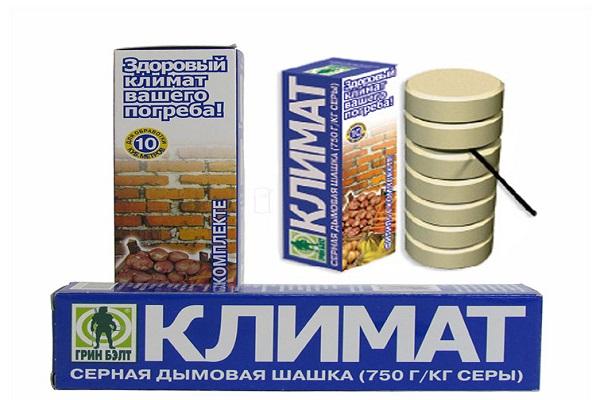
Preparing for winter
Narcissus Dutch Master is a frost-resistant crop, but it is advisable to cover it before the onset of cold weather. Flowers are mulched with peat, leaves or straw.
Reproduction
Daffodils are propagated by seed or vegetative means. In the first case, it is more relevant for breeding new varieties. Multi-peaked bulbs 2-3 years old are propagated by the vegetative method, separating only those children that easily leave themselves.
Mother bulbs are prepared in this way:
- cuts are made in the lower part, the children are left at an air temperature of 18-20 degrees;
- after 6-8 weeks, bulbs form at the site of the incisions;
- if they are planted, then pollen will come after 3 years.
Daffodils can still be propagated by paired scales. One onion is divided into 2-3 parts.

Application in landscape design
Plants are planted in groups of 20-30 in different parts of the garden, creating yellow flower drifts. Daffodils Dutch Master are widely used in gardening as early flowering crops, in flower beds, rabatkas, and are placed between bushes in separate spots.
Reviews
Feedback on the Dutch Master daffodil will help you decide on the choice of a variety, find out more information about it.
Irina Ivanova, 54 years old, Kiev.
Hello. I have been growing Dutch Master daffodils in the garden for about 5 years, now this is my favorite flower. In leaving, the plant is not whimsical, I periodically fertilize it with mineral compounds.
Pavel Rogozhin, 50 years old, Dnipro.
Greetings! Narcissus Dutch Master is one of my favorite flowers and produces gorgeous yellow flowers. Only positive impressions about the variety, I advise everyone!
